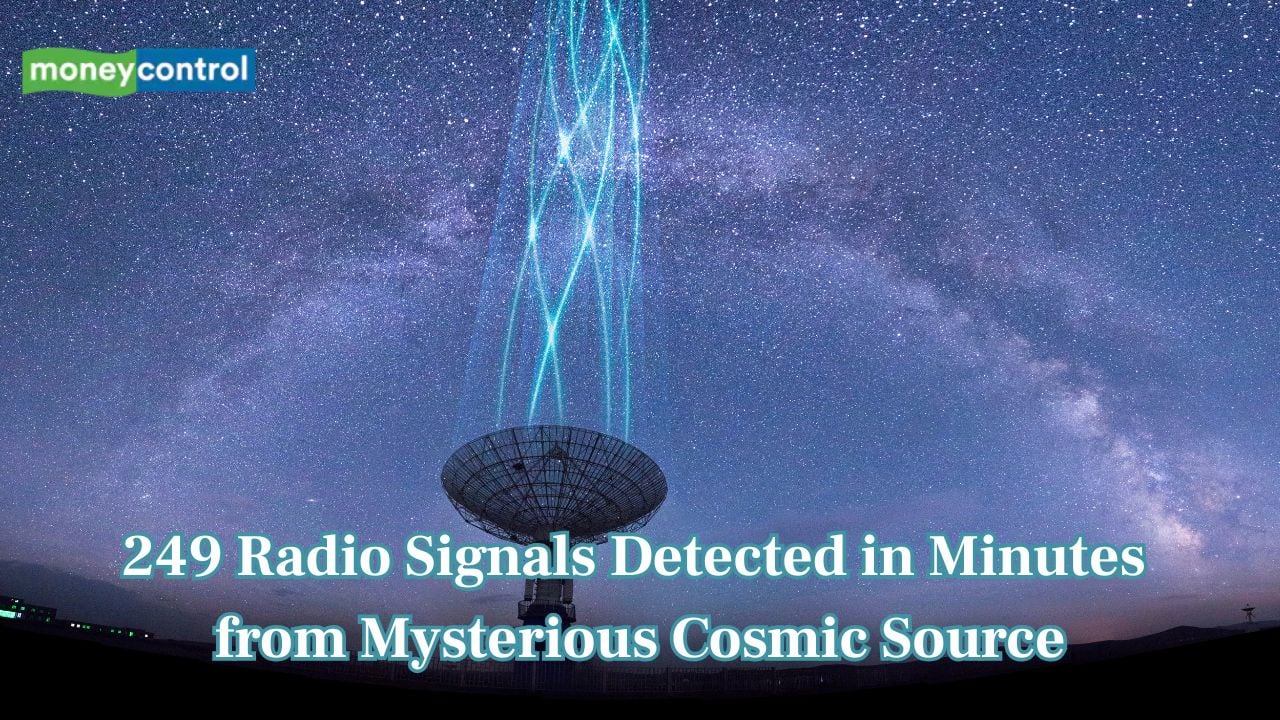Science
Astronomers Capture 249 Radio Bursts from Mysterious Source

Astronomers in South Africa have detected a remarkable surge of radio signals from a previously unidentified source in deep space. Utilizing the **MeerKAT** telescope, the research team identified a total of **249** radio bursts in a matter of minutes, marking a significant discovery in the study of fast radio bursts (FRBs). This unprecedented activity was first recorded on **June 19, 2024**, when three bursts were captured within just two minutes.
The source of these signals, designated **FRB 20240619D**, displayed activity across various frequency bands, including ultra high, L, and S bands. A follow-up observation one week later confirmed the continued emissions, with the majority of the bursts showing a clear preference for the L band. This high burst rate positions FRB 20240619D among the most active sources known to date.
Insights into the Behavior of Radio Bursts
The research team meticulously analyzed the characteristics of the bursts. Many of the signals filled only specific portions of the frequency band, while others exhibited drifting substructures that shifted downward over time. Such patterns have been associated with known repeating sources in the cosmos.
Most of the bursts were characterized by high linear polarization, although a subset demonstrated measurable circular polarization during observations. These findings provided valuable insights, suggesting that the bursts may originate from a region near a strong magnetic star, potentially a magnetar, rather than from external shocks. The angle shifts and swings observed during the bursts hinted at local plasma effects, further refining the understanding of their behavior.
Implications for Cosmic Research
The discovery of FRB 20240619D shares similarities with earlier repeaters like **FRB 20121102A**, both of which exhibited rapid bursts of hundreds of events within a single hour. These commonalities suggest that there may be underlying mechanisms driving these active repeaters, which could help scientists unravel the mysteries surrounding fast radio bursts.
FRBs serve as critical tools for astrophysical research, enabling scientists to map hidden matter across the universe. As these signals traverse intergalactic plasma environments, they accumulate dispersion, which can be measured to locate missing baryons in the cosmic web. This research, published in the **Monthly Notices of the Royal Astronomical Society**, underscores the potential of rapid bursts in exploring the universe’s hidden structures and enhancing our understanding of cosmic phenomena.
The findings not only shed light on the behavior of FRBs but also contribute to the broader quest to comprehend the fundamental elements of the universe. As astronomers continue to observe and analyze these extraordinary signals, they inch closer to solving the enigma of the cosmos.
-

 World4 months ago
World4 months agoSBI Announces QIP Floor Price at ₹811.05 Per Share
-

 Lifestyle4 months ago
Lifestyle4 months agoCept Unveils ₹3.1 Crore Urban Mobility Plan for Sustainable Growth
-

 Science3 months ago
Science3 months agoNew Blood Group Discovered in South Indian Woman at Rotary Centre
-

 World4 months ago
World4 months agoTorrential Rains Cause Flash Flooding in New York and New Jersey
-

 Sports3 months ago
Sports3 months agoBroad Advocates for Bowling Change Ahead of Final Test Against India
-

 Top Stories4 months ago
Top Stories4 months agoKonkani Cultural Organisation to Host Pearl Jubilee in Abu Dhabi
-

 Science4 months ago
Science4 months agoNothing Headphone 1 Review: A Bold Contender in Audio Design
-

 Top Stories4 months ago
Top Stories4 months agoAir India Crash Investigation Highlights Boeing Fuel Switch Concerns
-

 Sports3 months ago
Sports3 months agoCristian Totti Retires at 19: Pressure of Fame Takes Toll
-

 Business4 months ago
Business4 months agoIndian Stock Market Rebounds: Sensex and Nifty Rise After Four-Day Decline
-

 Politics4 months ago
Politics4 months agoAbandoned Doberman Finds New Home After Journey to Prague
-

 Top Stories4 months ago
Top Stories4 months agoPatna Bank Manager Abhishek Varun Found Dead in Well









